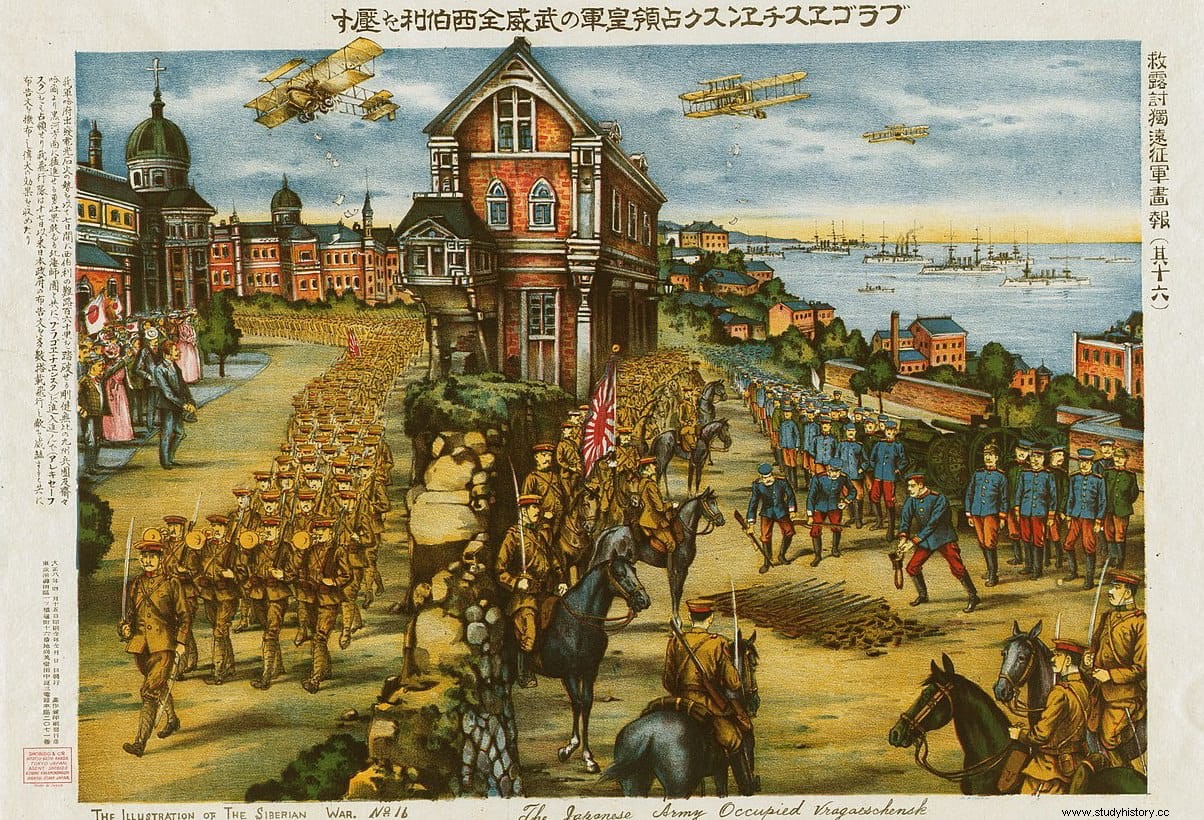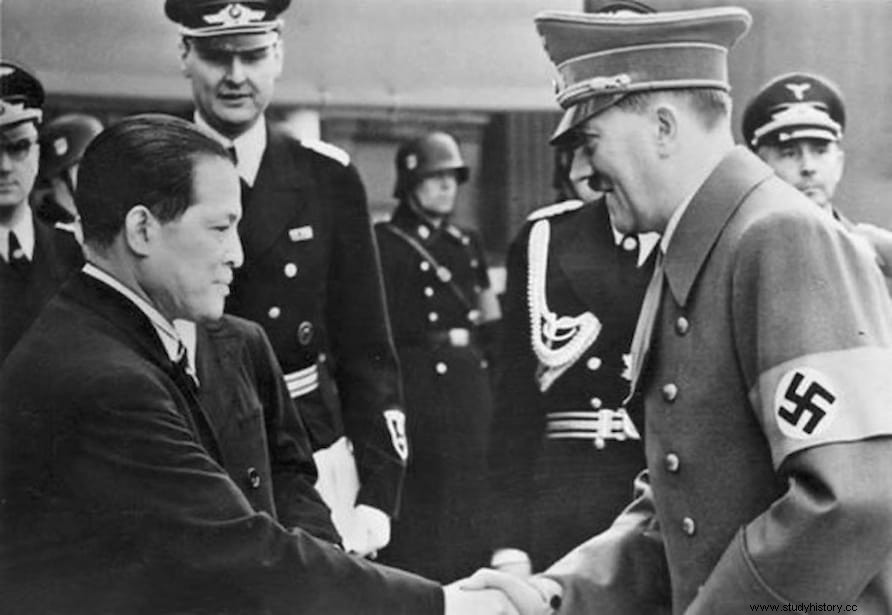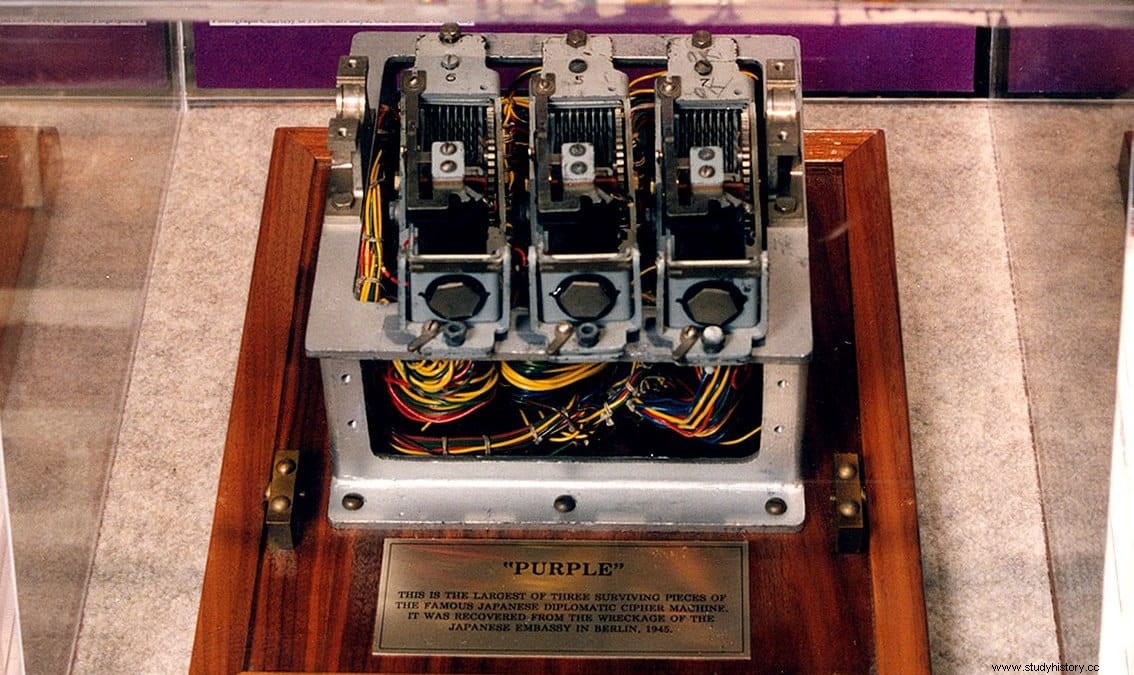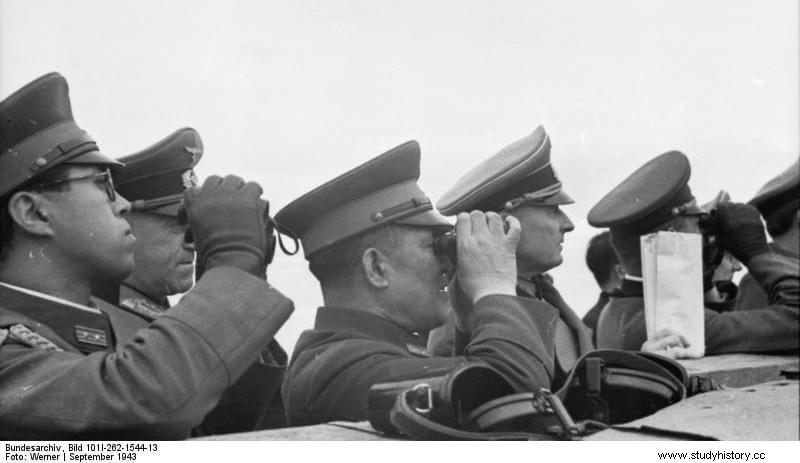Although the intelligence services were consecrated above all in the Cold War, they had already played more or less important roles throughout history. In that sense, it is possible that one can be considered among the best agents that have existed, one who acted during the Second World War, providing a thousand and a half reports to the Allies, to the point of being described by General Marshall as "our main source of information regarding Hitler's intentions in Europe" . The irony is that this spy was not such; It was about Baron Hiroshi Ōshima, the Japanese ambassador in Berlin, whose dispatches to his government were intercepted and deciphered without his knowledge.
Ōshima, born in Gifu prefecture in 1886, was from a noble family and public service was already in his genes because his father had been Minister of War from 1916 to 1918. He joined the Rikugun Shikan Gakkōla (Imperial Japanese Army Academy), obtaining the commission of a lieutenant in 1908. He then attended the Rikugun Daigakkō (Army War School) and was promoted to captain in 1915. His first assignment was Siberia, in the intervention that the Japanese government carried out between 1918 and 1922 to stop the eastward expansion of the Bolshevik Revolution and seize the port of Vladivostok before the British.

In that context, Japan had been moving away from its allies in the First World War (France, Great Britain, USA) to gradually approach Germany, although without supporting it militarily. When the war ended and the Weimar Republic was proclaimed in that country, Ōshima was sent to the embassy in Berlin as deputy military attaché, a position he later held in other legations such as Budapest (1923) and Vienna (1924). Meanwhile, he rose through the ranks and in 1930, five years after returning to his country, he reached the rank of colonel, receiving command of an artillery regiment.
But it was felt that his services would be more useful in diplomacy, and specifically in Berlin, since he had learned to speak German. So in 1934, with the Nazi regime fully in power, he returned to the embassy again as a military attache. Ōshima sympathized with Nazism and became friends with the German Foreign Minister, Joachim von Ribbentrop, actively collaborating with him in drafting the Anti-Comintern Pact, signed in 1936 by Adolf Hitler and Ambassador Kintomo Mushakoji (on behalf of Prime Minister Kōki Hirota); that agreement had the objective of stopping communism and creating Manchukuo (a puppet state in Manchuria), later gradually joining Italy, Spain, Hungary and others.

In fact, it was said that that treaty was promoted by Ōshima without counting on the Japanese Foreign Ministry and this was stated by Joseph Grew, US ambassador in the German capital, which is significant in two ways:on the one hand, it demonstrates the ideological affinity of the military attaché towards the Hitler regime ("he was more Nazi than the Nazis" was said of him); on the other, he reveals the level of knowledge that the US embassy had about the activities of the Japanese, who two years later was not only promoted to lieutenant general but also became ambassador.
In this new position, he further strengthened his relationship with Ribbentrop and acquired greater capacity to act as a visceral anti-communist, organizing an operation with Russian agents to kill Stalin -which evidently did not materialize-, in addition to expressing to the Teutons his desire to agree on a collaboration aimed at putting an end to the Soviet Union, which Japan continued to see as a danger too close to its borders. Ōshima's devotion to Nazism was such that the government, which had ordered him to return to Japan in 1939, upset by the signing of the Molotov-Ribbentrop Pact, reinstated him in office in 1941 at the request of Berlin.
He would no longer move from the German capital until the end of World War II, a conflict in which his country would enter that same year, making effective its membership since 1940 of the Tripartite Pact or Axis Pact together with Germany and Italy. Ōshima offered full cooperation in warfare, and that had an obvious field of operations:the Pacific. In exchange for attacking the colonial possessions of the British Empire, Ribbentrop promised help if Washington interfered. In the end, Japan chose to strike first at Pearl Harbor (December 7, 1941) and Hitler not only applauded the operation but also decorated Ōshima with the gold cross of the Verdienstorden vom Deutschen Adler (Order of the German Eagle).

But that collaboration went further. On January 3, 1942, the Japanese ambassador agreed with Germany to sink the lifeboats of torpedoed enemy ships with the aim of causing problems for the Allies in terms of the availability of troops, in case they could not be taken prisoner, something common in the ocean. “We are fighting for our existence and our attitude cannot be governed by any human sentiment” was Hitler's explanation, approved by Ōshima. In 1944 this way of acting worsened with the execution of the downed pilots.
There was only one thing the ambassador could not get:Japan declaring war on the Soviet Union when the Germans began their invasion of that country in June 1941, since Tokyo and Moscow had signed a non-aggression pact two months earlier. In fact, Ōshima was not even informed until Operation Barbarossa began.; so he did invite the Japanese to unite to get rid of the Russian threat in Asia once and for all. However, Japan declined the offer as it was unable to attend to so many fronts at once.
As can be seen, Ōshima maintained close contact with Ribbentrop and the Führer , which gave him access to substantial military information, both in terms of strategy and technical data. Much of it was reflected in reports that he then sent by radio to his government using an encrypted code; For this, a Japanese version of the famous ENIGMA machine was used. What the Japanese did not know was that the US intelligence services, which baptized the device with the name PURPLE , they discovered their coding system in 1940.
Therefore, everything that was transmitted between Germany and Japan by this means also reached the experts in the USA, sometimes even in less time. Worse still, not only the Americans but also the Soviets put on their boots, given that due to the distances many communications were made through the Japanese embassy in Moscow and the NKVD (Naródny Komissariat Vnútrennij Del o People's Commissariat for Internal Affairs; state security services) had the codes. They had been obtained by Walter Krivitsky, one of his infiltrated agents in Berlin, in 1936, on the occasion of the German-Japanese negotiations of the Antkomintern Pact.
It is estimated that virtually all of Ōshima's dispatches to Tokyo were intercepted and decrypted:around a thousand and a half in just over four years, despite the Germans warning him how unreliable they found his ciphers. That blunder in security cost them serious adversities, some well known, such as the death of Admiral Yamamoto when the time and direction of his plane were discovered; Others not so much, in the case of the diversion of North American tankers, which stopped supplying supplies in Spain in 1944 when they learned that a Japanese espionage network called TO operated there, reporting their departures.

Ōshima was a mine in terms of providing information and not only to the combatants but also to later historians:for example, when describing in his messages what effects the bombings caused in the cities, reviewing the number of casualties, the damage caused, etc. . It was something very valuable because it was objective, descriptive testimonies, formally far from other more personal ones like the one he did in 1941, without much sense, predicting that Great Britain would end up surrendering at the end of the year.
Now, probably Ōshima's biggest mistake in that regard was the one he made in 1943. In November of that year he toured the Atlantikwall (Atlantic Wall, the chain of defenses -bunkers, trenches, batteries...- built on the shores of that ocean in the so-called Operation Todt in order to stop the invasion that was known to be imminent) and he wrote a detailed report of twenty pages that, of course, ended up in enemy hands. This greatly facilitated the design of the plans for Operation Overlord (the famous landing in Normandy), to the point that the Allies knew that the bulk of the troops would not be in Normandy but in Calais, as well as taking note of the type of obstacles and resistance they would encounter.

Despite the fact that the war scale was tilting more and more clearly towards the adversary, the Japanese ambassador remained convinced of Hitler's final victory, refusing to leave Berlin with the other diplomats when the front reached the outskirts of the city and stating his desire to stay together with his friends from the Third Reich until the end. However, the order to leave the capital was blunt and he, along with the rest of his legation, went to Austria, where his wife was waiting for him, on April 14, 1945.
A few weeks later Germany surrendered and Japanese diplomats surrendered to US forces and were sent to the US. They stayed there for four months, after which they were able to move to Japan. But it was a fleeting freedom. In December of that same year, Baron Hiroshi Ōshima was arrested again, accused of being a war criminal.
He was tried by the IMTFE (International Military Tribunal for the Far East), popularly known as the Tokyo War Crimes Tribunal , who found him guilty and sentenced him to life in prison in 1948. However, times had changed to the point that the foreign minister, Mamoru Shigemitsu (who had the lightest sentence, seven years), not only obtained his freedom parole in 1950 but won the election four years later, so all the other defendants were pardoned in 1955, including Ōshima. He died in 1975.
